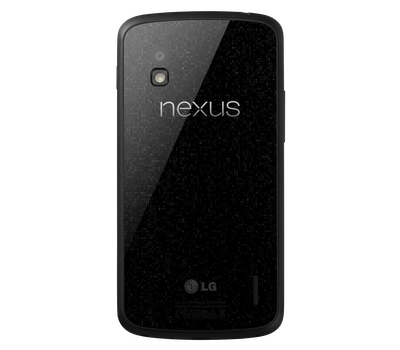 Believe it or not, this is one of my most recent reads of Joel C. Rosenberg’s end-times, political, action-thriller novels; this is also not my first review of one of his books (read about Implosion here). Yes, I know that it is the first fiction book that the author wrote, but the funny thing is that there was no Kindle edition when I first heard about and became interested in his novels. I had first heard of Mr. Rosenberg’s works just after finishing college in 2009. I wasn’t really in a good habit of reading back then, but I kept him in the back of my mind–just in case I started to read more often. In 2010, I received a 2nd generation Kindle for my birthday, and after a few months of having it (and loving it), I remembered Joel C. Rosenberg again.
Believe it or not, this is one of my most recent reads of Joel C. Rosenberg’s end-times, political, action-thriller novels; this is also not my first review of one of his books (read about Implosion here). Yes, I know that it is the first fiction book that the author wrote, but the funny thing is that there was no Kindle edition when I first heard about and became interested in his novels. I had first heard of Mr. Rosenberg’s works just after finishing college in 2009. I wasn’t really in a good habit of reading back then, but I kept him in the back of my mind–just in case I started to read more often. In 2010, I received a 2nd generation Kindle for my birthday, and after a few months of having it (and loving it), I remembered Joel C. Rosenberg again.
I navigated to Amazon.com one day, knowing that I wanted to read a good fiction. I found The Last Jihad, was about to purchase it, but found out–to my dismay–that it was not available in an eBook format yet (it is now). The funny thing was that at that time, I did not think that his novels were necessarily linked, so I found the next one in the search results, which ended up being the second book in the series: The Last Days (I’ll review that for my next review). Thankfully, as much as the novels were linked, I did not feel like I missed out by starting at book two. I ended up reading all the books in this series, and then on to the next series with the books: The Twelfth Imam and The Tehran Initiative (and am right now halfway through The Damascus Countdown).
Last fall, a year after reading all of the Kindle versions of Mr. Rosenberg’s novels (minus The Last Jihad), my wife and I were going to be going on an eight-hour trip, and I thought she would like to listen to the audio version of The Twelfth Imam. I purchased the audiobook from Audible just before leaving, used the Audible app on my Android, and we had a blast! Over the next few months, we used Audible a lot, finishing the two available novels for the David Shirazi series in no time. Just as a side note: it was just as fun and thrilling to read the books a second time via Audible, even after already purchasing the Kindle versions.
After finishing the two novels taking place in Iran, I figured it would be an enjoyable family time to be able to sit down in the evenings and just listen to a good series of books. Naturally, that would start out with Rosenberg’s first novel–the only one I had not gotten around to reading yet–The Last Jihad.
There is no doubt that the author has a talent to take real-world scenarios, put them into a fictional context, and make them entertaining for anyone. I am definitely the history buff and political junkie of the family, but I think that my wife has been just as interested–if not more so–than I am. On the cover, it would be easy to think of The Last Jihad and its sequels as simply a story for a niche market, but I have found that the author’s fiction works are enjoyable to everyone I have talked to about them. I have yet to meet someone else who has read Joel Rosenberg that has said they did not love reading his works.
The Last Jihad begins with a thrilling sequence events that take the reader from Denver, Colorado to Baghdad, Iraq. You are gracefully introduced to characters who, by the end of the series, almost become friends to you: President MacPherson, Marcia Kirkpatrick, Dr. Mordechai, Dmitri Galishnikov, and of course Erin McCoy and Jon Bennett. It was nice for me to get all of the background that I did not know about, or was hinted at in the sequels. The character building is gradual, and takes place over the course of the series, but I feel that the main characters are all introduced and played out well in this first book.
Multi-layered plots unfold from the American soil–in a time very reminiscent of the post-9/11 US geopolitical situation–and from slowly unfolding events happening in the Middle-East: the epicenter of the world. Assassinations, terrorism, and weapons of mass destruction are beginning to plague the world to a greater extent than they were before; evil men are gaining momentum; many good men are standing down; the world seems like it may implode. However, unlikely heroes rise up to their life’s calling, make tough decisions, while finding spiritual truth in the midst of their trials.
From a Christian standpoint, The Last Jihad is definitely the beginning of each character’s spiritual journey. Again, over the course of the series, you can truly see the spiritual growth, struggles, and decisions that have to be made at each step; yet this piece of the puzzle is only hinted at in The Last Jihad, making everything feel more realistic as plots unfold later in the book, and eventually later in the series.
I found The Last Jihad to be extremely readable as well. It is easy to pick up for just a few minutes and read, and even more easy to sit down and read for a few hours, losing track of time in the process. The flow of events is smooth, but details are not skimmed over either. I felt like I got the whole story of Jon Bennett and Erin McCoy as I listened to the last few words of the audiobook.
I cannot recommend reading The Last Jihad enough. I know that Joel C. Rosenberg’s novels have made evenings very exciting in our home. I know once you are finished with this first book, you will want to continue on. I am also going to finish reviewing all of his books that I’ve read here as well, over the next few weeks (though probably not in such great length…I had to give the background story for this first one!).




 Next I moved to researching Straight Talk (they “piggy-back” on several major carriers’ towers). Their plans are technically only sold at Wal-Mart right now, but they claim unlimited data, text, and talk for only $45. That sounded pretty good to me. I did the math in my head, and even if I rounded up from the actual $90 a month to $100 a month, that would save us about $70! Over two years, that’s over $1,500!
Next I moved to researching Straight Talk (they “piggy-back” on several major carriers’ towers). Their plans are technically only sold at Wal-Mart right now, but they claim unlimited data, text, and talk for only $45. That sounded pretty good to me. I did the math in my head, and even if I rounded up from the actual $90 a month to $100 a month, that would save us about $70! Over two years, that’s over $1,500!